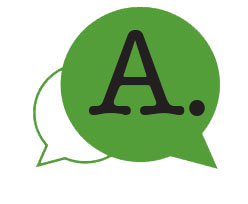Learn how to support students in building healthy, inclusive friendships from Dr. Angela Bahns, Associate Professor of Psychology at Wellesley College. Dr. Bahns’ research on friendship selection strategies and the dynamics of prejudice and friendship formation has meaningful implications for identifying ways to help reduce prejudice starting at a young age.
Dr. Angela Bahns is an associate professor of psychology at Wellesley College. Her research studies the dynamics of prejudice and friendship formation. She is a fellow of the Society for Experimental Social Psychology and an active member of the Society for Personality and Social Psychology, the Society for the Psychological Study of Social Issues, and the Association for Psychological Science.

Your research explores friendships, prejudice, and the way those two subjects intersect. What drew you to these topics?

Bahns: I got into social psychology because I wanted to do research that would improve our understanding of how to reduce prejudice. I began my research on friendship formation with a focus on the role of attitude similarity based on my observation that people often share the same prejudices their friends have. I came to view the commonness of similarity in friendship as a major barrier to diverse friendship formation, and have since focused on studying the factors that facilitate diverse friendships because of the many benefits they offer for individuals and for intergroup relations.

What do you hope to achieve with your research?

Bahns: I hope that my work will illuminate the factors that influence friendship choices, so that we can learn how to foster diverse friendships as a means of prejudice reduction and intergroup cooperation.

What has your research shown about how prejudice informs stereotypes and the perception of threat? What is significant about understanding prejudice in this way compared to the more traditional understanding of stereotypes causing prejudice?

Bahns: Several prominent theories of prejudice suggest that threat causes prejudice. This view implies that prejudice is a rational response to an imminent danger. My work has turned this idea on its head. My research uses experimental methods to demonstrate that prejudice can cause stereotypes and threat perception, rather than the other way around. This distinction is critical to the goal of reducing prejudice because a prejudice-causes-threat view shifts the focus away from the characteristics of the target group and onto the prejudiced perceiver. For example, take the stereotype that Black men are dangerous. A threat-causes-prejudice view assumes that something about “them” makes them dangerous, whereas a prejudice-causes-threat view suggests that something about “us” makes us see them that way. My work highlights how threat perception is a subjective
process, rather than a fact.

Your research into friendships has found that the social ecology—the school community, in the case of our readers—plays an important role in friendships. How does the environment affect friendships?

Bahns: Friendship choice is influenced by personal preferences as well as by the number and variety of potential friends in the school community. People who are interested in meeting people who are different from them are better able to satisfy their goals and preferences in more diverse settings as compared to less diverse settings. It is important that educational policies and practices that aim to foster diverse friendships consider both individual-level and community-level (school community) factors.

Friendships are often formed based on similarities, but studies show that diverse friendships can help to reduce prejudice. Some of your research has indicated that individuals with positive diversity beliefs are more likely to seek out diverse friendships. Can you describe your findings in this area?

Bahns: Using a field method in which my research assistants recruited pairs of people who appeared together in public spaces, we found that positive diversity beliefs were a predictor of being found together with a person of a different race, religion, and/or sexual orientation. However, positive diversity beliefs were also associated with attitude and value similarity. This latter finding suggests that when people tell us they value diversity, they do not often consider diversity of thought as a form of diversity that should be valued.

What is thought diversity, and why is it important in friendships? What does your research reveal about thought diversity among friends?

Bahns: We define thought diversity as dissimilarity of views on moral or political issues. The majority of research on diverse friendships in social psychology focuses on diversity in the dimensions of race and ethnicity. This is important work, but it reflects a limited conception of diversity and ignores the pressing societal issue of increasing political polarization. The research findings I described earlier suggest that “thought diversity” is not often recognized as an asset in personal relationships, which is why people with positive diversity beliefs do not necessarily have thought diverse friendships. One implication of this finding is that people tend to harbor negative attitudes toward and have difficulty cooperating with others who do not share their political views. The polarization of political values presents significant challenges for our society, not only for the functioning of our democracy, but also for creating and maintaining friendly and cooperative relationships among friends, colleagues, neighbors, and family members. I am currently exploring whether embracing political disagreement in the context of a friendship confers benefits for relationship and for intergroup relations.

From an educator’s perspective, what conditions facilitate healthy, diverse friendships? What can teachers do to support healthy, diverse friendships among their students?

Bahns: Teachers can facilitate healthy, diverse friendships by helping to establish positive classroom norms that communicate the value of students’ diverse backgrounds and experiences. For example, teachers might suggest classroom norms for discussion such as “we will speak for ourselves,” “we need each and every person in our classroom community,” and “everyone has something to learn and something to offer” [adapted from the IDEAL Center]. At the same time, structural factors that shape the diversity of students within districts, schools, and classrooms are also critical as diverse friendships cannot form without opportunity to meet and interact with people who are different from you.
Putting Research Into Practice
This planning guide can be used to help create a process for establishing rules and norms in your classroom.

What impact do you expect the pandemic, and the months of working and learning from home, may have on friendship formation in adults or children?

Bahns: I think the social isolation that many experienced due to the pandemic means that children and adults are craving social connection. This has the potential to increase people’s motivation to make new friends, and also to encourage more in-person social interaction, which increases opportunities for friendships to form.

What is your favorite aspect of your work?

Bahns: I love thinking about methodology and data analysis techniques to consider what is the best way to answer our research questions. I also love working closely with talented students as research assistants.

What are one or two projects you’re working on right now?

Bahns: I’m currently working on a project exploring the potential benefits of thought diversity in friendship, which we define as friends’ dissimilarity of views on moral or political issues. My students and I have developed a psychological measure of one’s “comfort with disagreement” in the context of friendship. We are investigating whether scores on our Comfort with Disagreement Scale are predictive of positive friendship qualities. Initial findings show that among thought-diverse friendships (but not thought-similar friendships), greater comfort with disagreement is associated with more positive relationship qualities. Next, we will turn to investigating the potential of having thought-diverse friends for prejudice reduction by asking, “Are thought-diverse friendships associated with more positive inter-(political) group attitudes?”
Putting Research Into Practice
Becoming comfortable with disagreement and with different viewpoints are important skills for students (and adults!) to learn and practice. For help explicitly teaching this skill, download this sample script for a lesson that models how to disagree respectfully. It was created for students in grades 5 and 6 but can be easily adapted for other grades.
You can find more information and background on this conversation and on Dr. Bahns’ research in the following articles.
“Cultural and Mobility Determine the Importance of Similarity in Friendship,” by Angela J. Bahns, Juwan Lee, and Christian S. Crandall. Journal of Cross-Cultural Psychology (June 2019).
“Preference, Opportunity, and Choice: A Multilevel Analysis of Diverse Friendship Formation,” by Angela J. Bahns. Group Processes and Intergroup Relations (2017).
“Social Ecology of Similarity: Big Schools, Small Schools and Social Relationships,” by Angela J. Bahns, Kate M. Pickett and Christian S. Crandall. Group Processes and Intergroup Relations (2011).
“Threat as a Justification of Prejudice,” by Angela J. Bahns. Group Processes and Intergroup Relations (2017).
